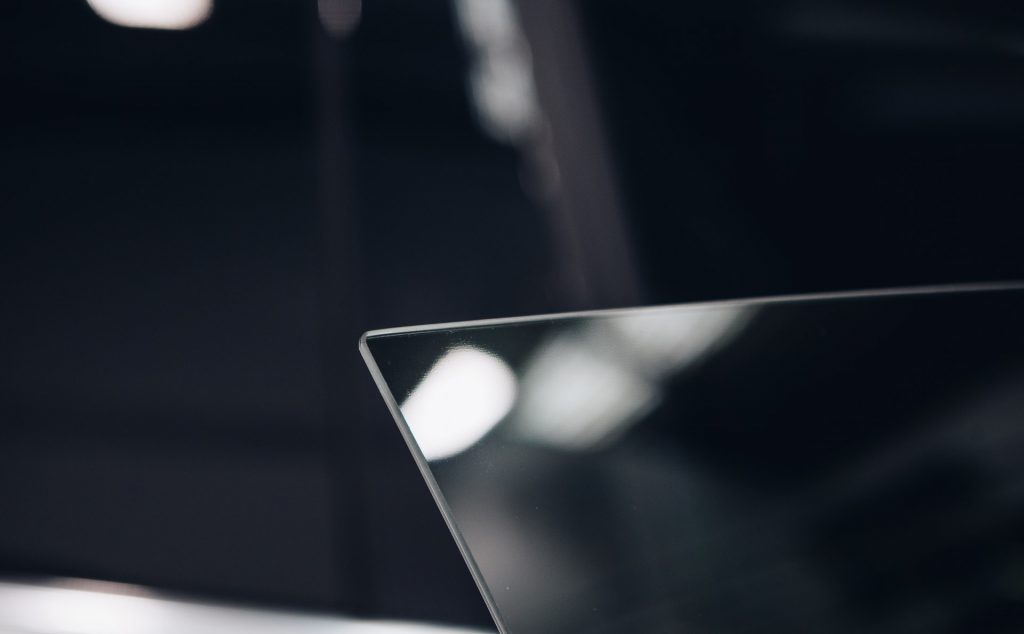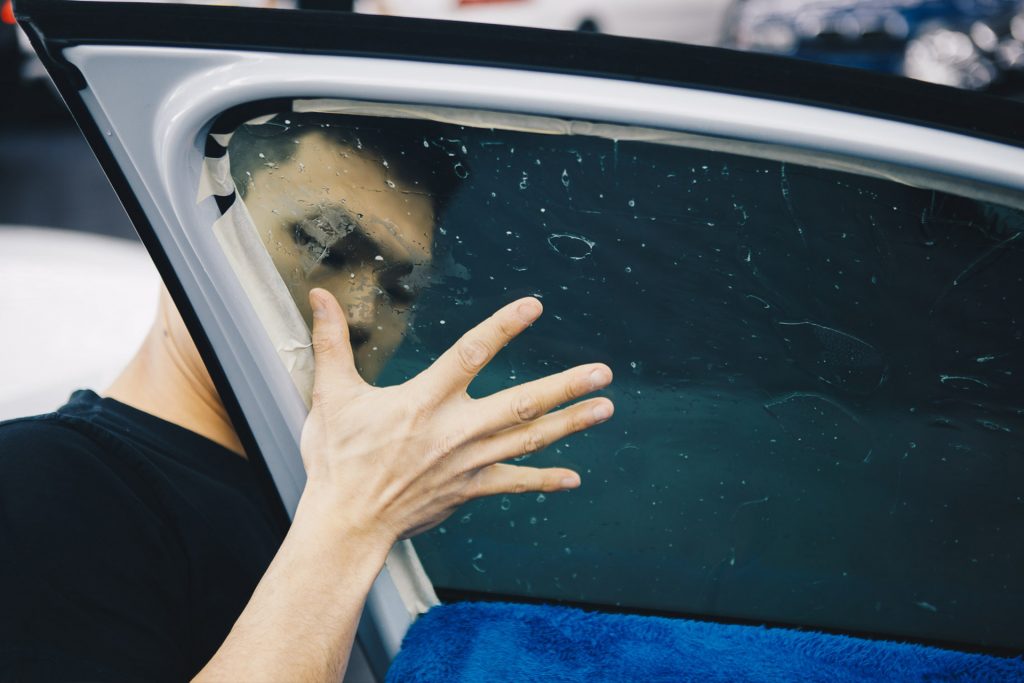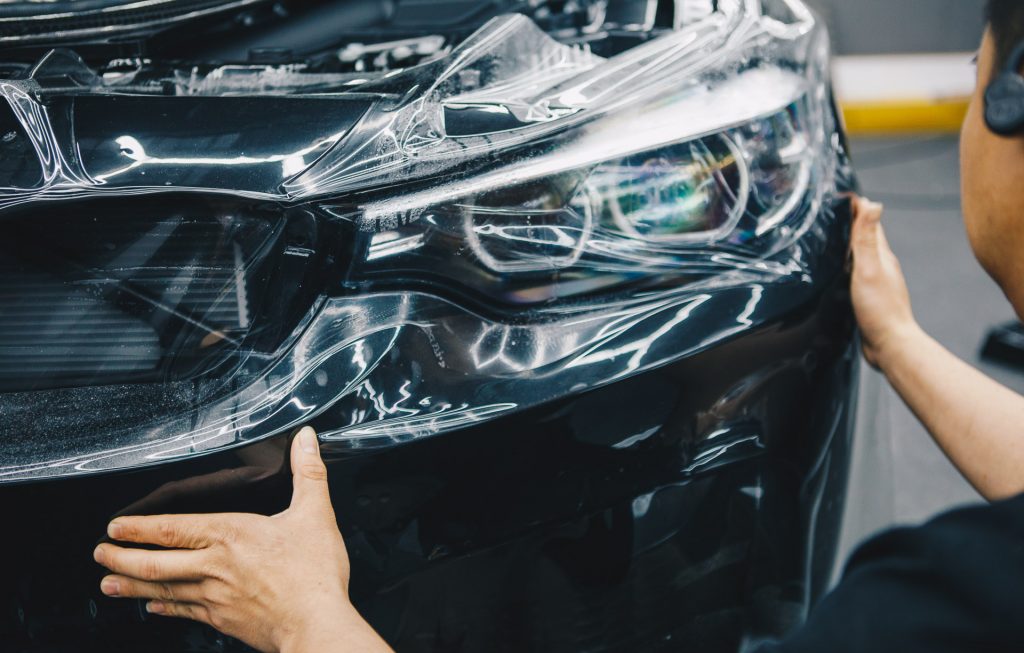
July 24, 2023
What You Need to Know About Car Window Tinting
We’re here to tell you what you need to know about car window tint. No matter whether you are a car enthusiast or not, window tinting can protect you and your car from the sun. This comprehensive guide provides all the information you need to know about car window tinting. From the incredible benefits that go beyond aesthetics to exploring various types of car tints available in the market, we’ve got you covered. Get ready to dive into this informative journey where we’ll also address essential considerations you should keep in mind before making your decision. So, buckle up and let’s explore everything there is to know about car window tinting!
What is Car Window Tinting?
Car window tinting is the process of applying a thin film to the glass of a car’s windows. The film can be clear, like that used for privacy or decorative purposes, or it can be tinted to reduce the amount of light that passes through the window. Tinting can also be done for safety reasons, such as to reduce the risk of injury in case of an accident.
There are many benefits to car window tint, including reducing glare and keeping the interior of your car cooler. Tinted windows can also provide privacy and security from prying eyes. There are different types of tints available, so you can choose the level of tinting that best suits your needs.
Before having your car windows tinted, there are a few things you should consider. First, check your state’s laws on window tinting. Some states have restrictions on how dark a tint can be. Second, consider the type of film you want to use. There are many different types of tints available, each with its own advantages and disadvantages. Third, make sure you hire a reputable company like Liquid R to do the job. Once you’ve considered all these factors, you’re ready to enjoy the benefits of window tinting!
Let’s Explore the Benefits of Car Window Tinting
Car window tinting offers a number of benefits that can improve both the look and function of your vehicle. Tinted windows can reduce glare, making it easier to see while driving. They can also block out harmful UV rays, helping to keep your car’s interior cooler and protecting your skin from sun damage. Window tint can also provide privacy and security, deterring would-be thieves from being able to see inside your car.

There are several different types of window tint available on the market, each with its own set of benefits. Darker tints offer more UV protection and privacy but can make it harder to see out of your windows at night. Lighter tints may not provide as much privacy or UV protection but will allow you to see out of your windows more easily. You should also consider the climate in which you’ll be driving when choosing a window tint; in very hot climates, a darker tint may be necessary to keep your car’s interior cool, while in colder climates a lighter tint may be sufficient.
When having your windows tinted, it’s important to choose a reputable installer who uses high-quality materials like 3M tint. Cheaply made tints can fade quickly or bubble up, ruining the look of your car and potentially impairing your vision. Make sure to ask about the warranty on the window tint before having it installed; some companies offer lifetime warranties against fading or bubbling, while others only offer limited warranties for a certain amount of time.
Different Types of Window Tints
There are a variety of different types of window tints available on the market, so it’s important to know what each one offers before making a decision. Here is a look at some of the most popular types of window tints:
Crystalline Film
Despite being almost transparent (hence the term glass tint), these multi-layered tints still block heat and UV rays. If you want privacy from window film, a clear tint is not for you. A crystalline tint is the best way to get the look and feel of clear windows on your car while still blocking heat and UV rays. The effectiveness of this tint type has been thoroughly tested, so you can rest assured your windows are blocking out the sun’s harmful rays. Its low-key aesthetics and effective UV blocking make crystalline window tints a popular choice.
Ceramic Film
Despite the fact that these car tints are costly, they are also the most effective. This is due to the fact that ceramic tints do not contain any dye or metal particles. Instead, they use non-conductive ceramic micro-particles instead. Your vehicle’s upholstery is protected from UV rays and cell signals with these particles, which reduce UV rays by up to 99%. In addition, ceramic tints reduce glare, are extremely strong and shatter-resistant, and are difficult to scratch.
Carbon Films
Infused with ultra-reflective carbon particles, carbon tints have a matte finish that creates a more tasteful alternative to metalised tints. In addition to insulating and blocking heat, the embedded carbon particles block up to 40% of infrared light. Additionally, carbon tints reflect heat far more effectively than dyed or metalized counterparts, and radio signals will not be blocked by them.
Tints That Are Dyed
The most common and most affordable car window tinting option is dyed window tinting.
A dyed tint is a thin, multi-layered film of dyed plastic that adheres to your car’s windows. It is made up of different densities of dye, so you can choose the amount of tint you want. A dyed tint provides decent UV protection and privacy at an affordable price.
Metallised Car Film
Tint films with metal microparticles embedded within their layers reflect heat and ultraviolet rays.
Metal particles also strengthen your car’s windows, making them less likely to shatter when broken. Although these tints are shinier than dyed tints, they are far more scratch-resistant.
Tints With Hybrid Properties
Metallised tints and dye films are combined to create hybrid tints, which combine dye film’s affordability and privacy with metallised tint’s strength and UV-blocking properties. These tints are more scratch-resistant and will not fade as quickly as regular dyed tints.
Considerations Before You Tint Your Car Windows
There are a few things you should take into consideration before you tint your car windows. The first is the type of tinting film you want to use. There are two main types of films: dyed and metalized. Dyed film is less expensive and gives your car a darker look, while metalized film is more durable and reflects more heat.
The second thing to consider is the amount of tinting you want to do. You can get your windows tinted at different levels, from light to dark. The level of tinting you choose will depend on how much privacy you want in your car and how much heat you want to block out.
You need to make sure that the company you hire to tint your windows is reputable and has a good reputation. You don’t want to end up with bubbles or peeling tint, so make sure you do your research before hiring someone.
Choosing the right type of car window film can be difficult, but Liquid R makes the decision easy with their great range of 3M car tint. One option to consider is non-metalized window film, which is made from a nano-carbon polyester film. This type of tint offers excellent heat reduction and UV ray protection without interfering with signals. If you’re looking for a subtle look that doesn’t change the appearance of your glass, clear window tint might be the best choice for you. While it doesn’t offer much in terms of heat reduction, it effectively reduces glare and maintains your vehicle’s original aesthetic. On the other hand, if you prioritise heat reduction and UV ray rejection over signal interference concerns, ceramic window tint would be an ideal choice. Made from non-metal materials, this high-quality film provides superior protection against both heat and harmful rays. However, it is worth noting that ceramic tints tend to be more expensive than other types due to their premium features.
If your primary concern revolves around protecting yourself and your vehicle’s interior from damaging UV rays while maintaining clarity on the road, then UV-rejecting window tint should definitely be on your radar. This specialised type of tint specifically targets harmful ultraviolet rays responsible for skin damage and fading interior fabrics.
Regardless of which type you choose for your car windows’ needs—be it non-metalized films like nano-carbon polyester or top-of-the-line ceramic options—it is crucial to have them professionally installed by experts such as Liquid R who are well
DIY vs Professional Car Tint Installation
A lot of people choose to install their own car window tinting film, thinking it will save them money. But we’re here to tell you that professional installation is always the way to go. Here’s why:
1. Better Quality Tinting Film
When you buy a roll of tinting film from your local hardware store, you can be sure that it’s not the same quality as what the professionals like Liquid R use. We have access to high-quality tinting film from 3M that will do a better job of blocking out the sun’s harmful UV rays.
2. More Precise Installation
Installing tinting film is not as easy as it looks. If you don’t do it right, you could end up with bubbles or wrinkles in the film. When you leave it to the professionals, you can be sure that your film will be installed perfectly.

3. Increased Longevity
Professionally installed window tinting film will last longer than DIY jobs. This is because the pros use high-quality materials and they know how to properly take care of the tinted windows.
Cost of Professional Installation
The cost of professional installation can vary depending on a number of factors, including the type of car you have, the size of your windows, and the geographic location. The average car window tint cost is between $450 and $750. However, if you have a larger or more complicated job, the cost can be closer to $1,000.
Choosing the Right Car Window Tint
Car window tinting offers a lot of benefits and options, from improved privacy to customising the look of your vehicle. With so many types of car tints available on the market, it can be challenging to choose which one is right for you. We hope this article has helped you consider the best type of car window tint for your needs. Before selecting your tint, make sure that you consider all factors involved including local laws, effects on vehicle performance and durability as well as cost. By doing your research ahead of time, you can ensure that you select the correct type for both aesthetic purposes or energy efficiency needs.

Don’t forget to reach out to the professional 3M tint team at Liquid R for all your car tint and paint protection related questions or costings.
Car Tinting Questions We Regularly Receive
We’ve compiled a list of frequently asked questions below on tinting car window. Have a look!
What Are The Australia’s Car Window Tinting Laws
In Australia, your front and side windows are limited to 35% VLT.
Most Australian territories allow only a 10% strip of tint across the top of the windscreen, and it cannot cover the entire screen.
The VLT on your backside and rear windows is limited to 20%.
All states and territories allow tint reflection up to 10%, with the exception of NSW.
Ensure that you know what your current car tint percentage is before you apply more tint in order to comply with local laws. Remember that your car might have left the store with tint applied already, so make sure you verify that percentage prior to applying more tint.
How Dark Is Darkest Legal Tint?
Darkest legal tinting is the most common request. The combination of window film and glass must not result in less than 35% visible light transmission (VLT) through the driver’s window and front passenger’s window, and no less than 20% visible light transmission through all rear windows. The darkest legal tinting limit in Victoria is 35% light transmission on the front doors and 20% light transmission on the rear doors. Rear doors that are tinted to the darkest legal limit of 20% light transmission offer greater shade and privacy for passengers and possessions at the back of the car. Alternatively, if you prefer all your windows to be the same shade, you can tint all your windows of your car to 35% if you like the dark look. In Victoria, 35% light transmission is the darkest legal tinting limit for the front and rear doors.
What Is The Best Tint Type?
Selecting the ideal car window tint for your vehicle is solely based on your individual taste. For privacy reasons, a well-known figure may opt for a deep dyed tint, whereas a spy would prefer a metallised tint to enhance protection against breakage. Additionally, the climate in your location influences which type of tint you should choose. If you reside in an area with intense sunshine, either a dyed or metallised window tint can diminish glare and heat, resulting in increased comfort within your car’s interior. Furthermore, by blocking UV rays that typically force air conditioners to labour more intensively and consume extra fuel, it can also enhance fuel efficiency.
Trending Chameleon Tints – What Are They?
There is a new, reflective trend in automotive customisations called chameleon tinting. Its colour changes depending on the weather, lighting, temperature, and the angle of view. Chameleon tinting is mainly used for luxury cars and can be applied to any window that allows light in. It works by incorporating nano-particles into the film which change colour when exposed to different conditions. The colour of the film shifts from a lighter tone when it’s cool outside, to darker tones as the temperature rises. It can also offer UV protection and privacy so you don’t have strangers staring inside your car.
After my car windows have been tinted darker, how do I clean them?
Window tinting is a great way to keep the interior of your car cooler and reduce glare from the sun. However, it can be tricky to clean tinted windows properly without damaging them or removing any of the tinting material that has been applied. The best way to clean your windows is by using a mild soap solution and a microfiber cloth. Start by spraying some of the soap solution onto one window at a time, then use gentle circular motions with your microfiber cloth until all areas have been cleaned. Make sure you don’t apply too much pressure when cleaning as this could cause damage to both the glass and tinting materials. Once you are finished, use another dry microfiber cloth to wipe away any excess moisture on each window before moving on to the next one. With regular cleaning, you can help keep your car looking its best while ensuring that none of the tint has been compromised in any way!
Complement Your Window Tint With Car Paint Protection
Get total car protection by combining your tinted car windows with ceramic coating or PPF protection from Liquid R, backed by the latest technology and knowledge to keep your car safe from the elements. With ceramic coating or PPF wrap protection you can protect your paint against scratches, minor dents and chips, as well as UV damage. At Liquid R our technicians will apply a layer of special film between the outer surface of the vehicle and its original finish for an extra level of protection. Plus our PPF car protection is designed to last for years without fading or discoloration to help maintain that ‘like-new’ look for longer.

Visit us today at Liquid R and discover how we can provide total car protection with our range of window tinting, ceramic coating and ppf services!
